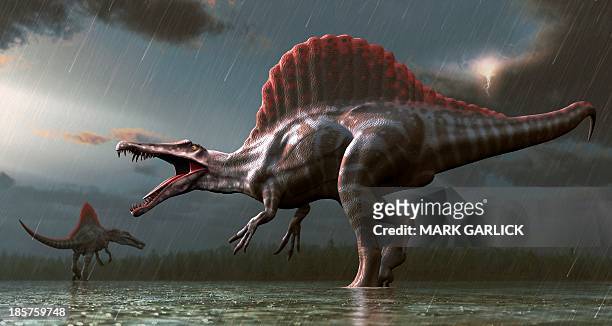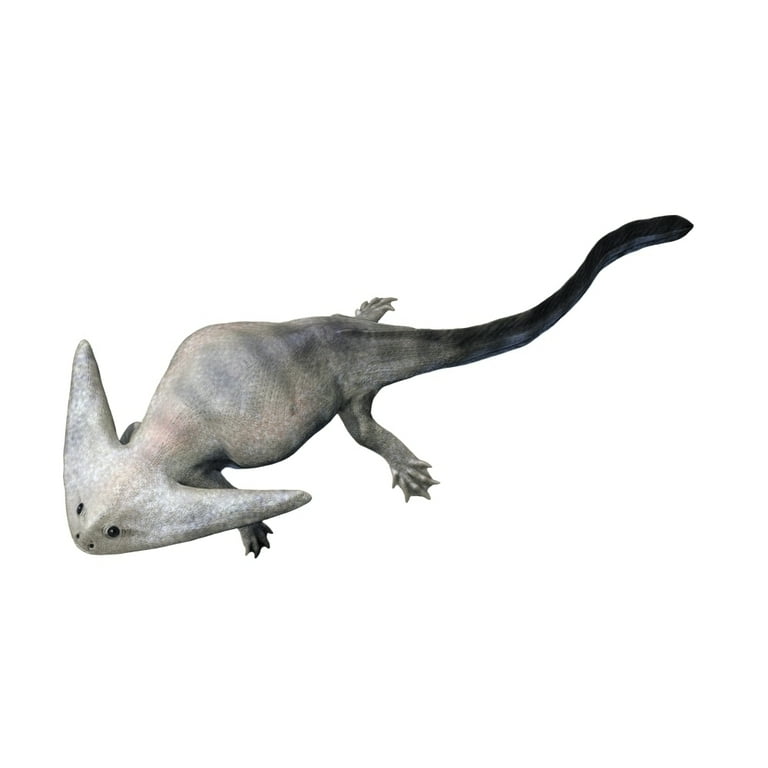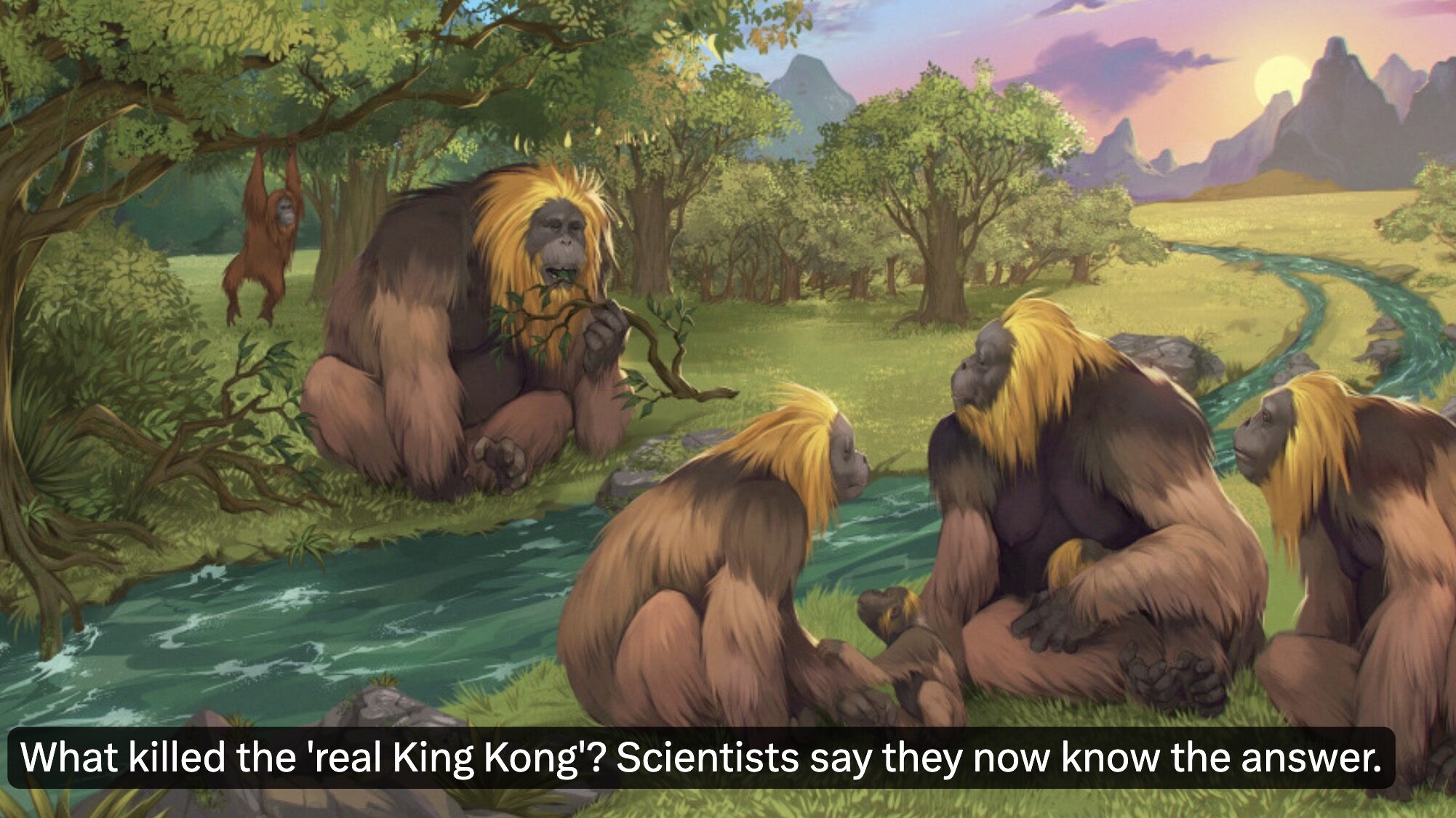
Dimetrodons in The Golden Treasury of Natural History
Once upon a time there were all these weird large reptiles with sails on their backs. Dimetrodon is the best known, but there are several kinds of reptiles, unrelated, that carried “sails” on their backs.
But there was also this.
Platyhystrix wasn’t even a reptile, but an amphibian.
And the motif crops up again, in a big, big way!

Spinosaurus was one of the largest predatory dinosaurs. Dig the sail! And the contemporary vegetarian dinosaur Ouranosaurus, also carried a nice high sail.
Why does this crazy feature crop up in so many unrelated prehistoric animals? Scientists don’t agree as to what the sail’s purpose might have been. The only use they’ve ruled out is… well, sailing. Heck, it might’ve had a dozen uses.
I can’t help but think God had a use for it. I don’t see it popping again and again into the fossil record as a random response to the environment.
And then there was the head of Diplocaulus, shaped very like a boomerang…






